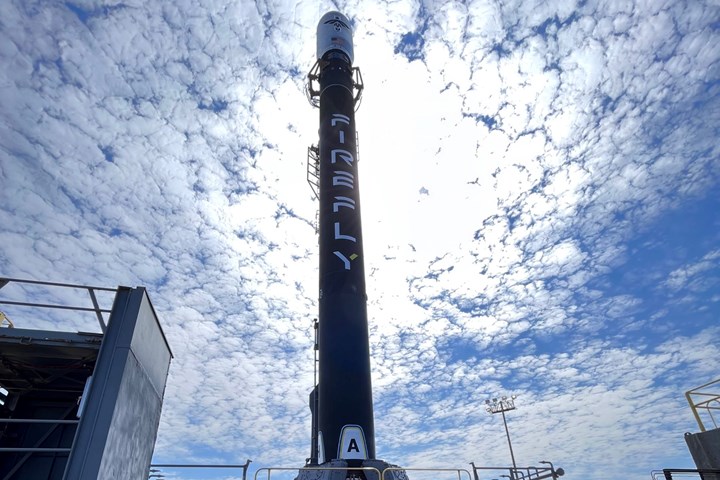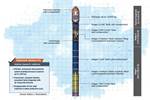Firefly Aerospace's Alpha, launch services company selected by NASA for VADR missions
The composites-intensive Alpha launch vehicle will be used in NASA missions to deliver payloads such as CubeSats.

The Alpha launch vehicle on the pad at Vandenberg Space Force Base.
Photo Credit: Business Wire
Firefly Space Transport Services (STS, Cedar Park, Texas, U.S.), a wholly-owned subsidiary of Firefly Aerospace Inc., announced on Sept. 14 that the company has been selected by NASA to provide launch services for the agency’s Venture-Class Acquisition of Dedicated and Rideshare (VADR) missions in the 500-1,000 kilogram grouping. Firefly’s composites-intensive Alpha rocket will be used.
According to Firefly, the fixed-price indefinite-delivery/indefinite-quantity contract has a five-year ordering period with a maximum total value of $300 million across all contracts.
“This award is a pivotal step for Firefly to continue to work with NASA and build upon our existing VCLS and CLPS contracts and our partnership with Northrop Grumman to send cargo to the ISS,” says Bill Weber, Firefly Aerospace’s CEO.
Launch vehicle capabilities for the VADR contract are divided into three categories: below 500 kilograms, 500-1,000 kilograms, and above 1,000 kilograms, with a specification that there be multiple providers for each category. NASA/KSC (Kennedy Space Center) determined that there was only one provider for the 500-1,000 kilograms category currently on the VADR contract and posted an intent to enter sole source negotiation with Firefly to fulfill the multiple provider need. Further, NASA noted that Firefly is the only launch vehicle provider in this grouping that has completed development and conducted its first test launch.
“Firefly has had a long-standing relationship with NASA and is committed to providing NASA and other U.S. government entities with responsive, repeatable, reliable space transportation services,” says Jason Mello, president of Firefly STS LLC. “We are honored to be included in this award and to be one of two vehicles in this class to meet the NASA’s Launch Services Program demand for assured access to space.”
The VADR contract will provide a broad range of Federal Aviation Administration (FAA)-licensed commercial launch services capable of delivering payloads ranging from CubeSats to Class D missions to a variety of orbits. These small satellites and Class D payloads tolerate relatively high risk and serve as an ideal platform for technical and architecture innovation, contributing to NASA’s science research and technology development.
Firefly’s Alpha Flight 2 mission is currently scheduled to launch from Vandenberg Space Force Base on Sept. 19, following an initial flight attempt on Sept. 2, 2021. Firefly’s VADR award builds on their previous $9.8M award of the VCLS Demo 2, which is currently being prepared for integration and will be flown on their upcoming Alpha Flight 3 mission planned for later this year.
For more information on the composites design for Alpha read “The Alpha launch vehicle: Designing performance in, cost out.”
Related Content
-
The potential for thermoplastic composite nacelles
Collins Aerospace draws on global team, decades of experience to demonstrate large, curved AFP and welded structures for the next generation of aircraft.
-
Plant tour: Albany Engineered Composites, Rochester, N.H., U.S.
Efficient, high-quality, well-controlled composites manufacturing at volume is the mantra for this 3D weaving specialist.
-
Plant tour: Middle River Aerostructure Systems, Baltimore, Md., U.S.
The historic Martin Aircraft factory is advancing digitized automation for more sustainable production of composite aerostructures.

.jpg;width=70;height=70;mode=crop)














